One of the many benefits of shipping containers is their strength and durability, whether used for storage or for building a home. These qualities are useful for enduring inclement weather, resisting environmental decay, and keeping animals and pests at bay, but there is another reason why many people gravitate toward containers: Security.
Whether concerned about intruders coming in while you sleep, or just someone breaking in while you aren’t around, security is a common concern. And as a huge, imposing metal box with one set of heavy doors, a container certainly looks quite strong and secure. However, a lot of this strong appearance is designed not for stopping intruders, but from surviving a difficult journey at sea.
Shipping containers spend most of their lives transiting on ships, trains, and trucks or sitting in secure laydown yards and storage facilities, all of which offer some form of security that’s external to the container itself. Due to the fact that containers aren’t easily accessible to the public in these environments, they are designed to be fairly secure but not impenetrable. However, when you put a container on your property, you give up some of that external security that was previously offered and may need to think about additional security measures.
A container is most secure in its unmodified state, and each cut for additional windows and doors not only weakens it structurally but provides would-be intruders additional avenues of entry. In this article, we’ll talk about ways to lock the end doors of a plain container, but we’ll also cover how to secure a container modified for use as a home. We hope you’ll find actionable advice here that can help you protect the things you cherish and the people you love.
What do we mean by “security” for containers?
Before we get into the specifics of securing your shipping containers, we first need to clarify what exactly security means. By taking a systematic approach to understanding what’s involved in security, you’ll end up with a safer container while spending less money on unnecessary things.
In the context of shipping containers (and the rest of this article), when we talk about ‘security’, we’re specifically talking about the branch of security known as physical security. Physical security focuses on securing a tangible object or piece of property and is separate from things like computer security or national security.
Security for our purposes has two main, interrelated goals:
- Protecting property: Keeping the container itself from being damaged and the things inside (including people) from being taken or harmed.
- Denying access: Keeping unwanted people from getting inside.
Those two goals are accomplished via three methods: Deterrence, Prevention, and Detection. Later we’ll define each method and give examples of each, but first, let’s discuss if you even need additional security as we’ve defined it.
Does additional security make sense for your container?
Now that you understand what security means in the context of shipping containers, you have to determine if you have something worth protecting. If so, you have to examine how effective different choices might be and if the benefits are worth the costs.
Do you need additional security?
To decide if additional security is worth considering, you need to evaluate what you have to lose (importance of the contents) and how you could lose it (intrusion risks).
Importance of a shipping container’s contents
Let’s take the extreme end of the spectrum: a completely empty container. Most people would agree that there is probably no reason to secure the air inside. What if the container is full of old garbage? More than likely, you don’t need to secure that either. The point here is that before spending time, energy, and money designing and implementing security measures, you need to first have something worth protecting.
To be clear, ‘protecting contents’ includes stopping both theft and vandalism. In the case of a shipping container house, even if you haven’t even moved in yet and there are no valuables or furniture to steal, someone could still cause you a lot of problems by vandalizing the interior. Therefore, you need to think about how difficult and expensive it would be to replace anything that is stolen OR damaged in place.
Intrusion risks
The risks you need to weigh include both the who (random robber, disgruntled coworker, desperate drug addict, etc.) and the how (access to tools, avenues of approach and escape, proximity to other structures and people, etc.) of an intruder.
The “who” is relevant because different people have different motivations. You need to understand the demographics of your area to have a better idea of who might be interested in your container.
However, the “how” is much more important and something you’re more easily able to evaluate and address. To understand the “how”, you have to take a look at the area surrounding your container and your property and think like a criminal. While we can’t cover every scenario, some examples may help.
For instance, how far off a public road does your container sit, and does the access road require a high clearance or 4wd vehicle? Is your container close enough to another occupied structure that someone would hear the sawing or hammering of an intruder, or could see them through a window? Is your container so rusty and weathered that a sledgehammer could break through, or would more sophisticated tools be required?
In the main section below, we’ll cover the actual security measures you can use that will address many of the “how’s” for intrusion risks. But first, let’s talk about if additional security measures would actually be effective.
Would additional security measures be effective?
As you think about different possible security measures you could take, you also need to think about their effectiveness, especially as part of a larger system.
For deterrence, a “This house protected by an alarm” sign that is unlit and behind a bush isn’t going to be very effective. Intruders will only be deterred when they know about your deterrents.
For prevention, a fence with an open gate or a door with a broken lock won’t do much to stop anyone. Preventative measures have to be functional, comprehensive, and used properly to work.
For detection, an alarm is only useful if someone can hear it (or is remotely monitoring it) and can respond before the intruder leaves. Video is only useful if you can actually identify someone from it via facial recognition, license plate number, or similar. Detecting that something happened isn’t enough, as you’ll detect the break-in yourself the next time you look at the container. The detection has to go hand in hand with active response or identification for later prosecution.
Finally, it’s important to understand that to some degree, you need a balance between all three security methods. For instance, even with great prevention and protection systems, if an intruder can work noisily for hours defeating those systems and still be undetected, the overall security system is ineffective.
Also, for most security measures, the effectiveness is usually pretty black or white. For example, a lock won’t protect your stuff halfway. It either completely works, or it doesn’t, there is no middle ground.
Collectively, security devices are only as strong as their weakest link. Putting a bank vault door on a cardboard box is pointless. So again we implore you to think critically about your containers and your property holistically to ensure you’re only as secure as you need to be, but that you don’t have a false sense of security either.
Are additional security measures worth the costs?
Like many investments, security comes with the challenge of balancing costs and benefits. The benefits of protecting your container are obvious…you get to keep your possessions and your home stays intact as we discussed above. You can estimate the value of that benefit by thinking about the time, effort, and money needed to replace what would otherwise be stolen or vandalized. You also have to factor in the likelihood that the security measure (which provides the benefit) is effective.
With regards to cost, there are several things to consider. The first element of cost is one you likely thought of first, the upfront cost of acquisition. The second and third elements of cost are related to the first element by the ‘tail’ of its lifecycle (smaller costs that occur later), and they are often forgotten. The fourth element of cost isn’t actually monetary. Instead, this element is about time and ease of use.
- Cost of acquisition: The cost to purchase a security measure, whether its a lock, a fence, a camera system, etc.
- Cost to operate and maintain: The things that must be done to keep the security measure working properly and looking aesthetically pleasing. Examples include rust removal and painting of metal, lubricating hinges and locks, replacing batteries, monitoring alarms and cameras, etc.
- Cost of removal and replacement: Steps that must be taken when a security measure has reached its end of life. We’re talking about things like cutting off an old lockbox or replacing an old camera. Removal may not be for a LONG time, but it can sometimes be expensive and labor intensive, depending on the installation method. And replacement can also be tricky, especially when you’re just replacing one component of a system. Years after the acquisition, will you be able to find a replacement component that works with the rest of the system, or will you just replace the entire system even though the other parts were still working?
- Cost of time and inconvenience: These are human costs that relate to the security measures, and are just as important as the other costs. Every lock needs to be locked, every door needs to be closed, every key needs to be kept track of, etc. and someone has to actually take those actions and be able to do so safely. These things individually aren’t difficult, but together can become tiresome and inefficient. You have to be honest with yourself and decide if you’d actually use any particular security measure given these types of costs.
Weighing the costs and benefits of security measures is difficult. As discussed, you’ll have to estimate the value of the benefits, which is hard to guess when you don’t know exactly how effective the system will be at deterring, preventing, and/or detecting an intruder.
And the costs can sometimes be hard to guess as well. Will the company that sells your alarm system still be around in five years to sell you replacement parts? Will you really feel like fastening all those end-door locks when it’s cold and raining?
Another factor to consider is any insurance you may have on your container. You should check on the details of your insurance policy to see if any specific security measures are required to maintain your coverage.
The point here is not to provide an algorithm that can calculate the exact costs and benefits and tell you what to do. Rather, you need to think qualitatively about everything discussed, and know that just by asking the right questions, you’ll be better prepared to make a decision. Assuming you’ve decided that additional security measures are at least worth investigating, we’ll now proceed into discussing specific options that exist.
What container security measures should you use?
The previous section helped determine if additional security measures would be necessary, effective, and worth the costs. Now, it’s time to look at specific security measures through the lens of the three methods of security we discussed earlier in the article: Deterrence, Prevention, and Detection. The three methods do have some overlap, but we’ll do our best to call out any specific cases where something fits into more than one category.
Deterrence of possible threats
Deterrence is keeping someone from even trying to break into your container. The intention here is convincing possible attackers and intruders that they are very unlikely to be successful, so why even risk making an attempt. In general, this is done with strong, visible defenses or indications of defenses.
Exterior Lighting
It’s no surprise that a lot of criminal activity happens at night, as intruders hope to avoid detection. Lighting that is well distributed around a container is best. It’s also recommended to have lighting mounted high to reduce tampering and to consider having a backup power supply for lights if the electricity supply is cut.
For the lights themselves, you have choices like incandescent, halogen, and LED. We recommend LED technology for it’s lower energy use and longer bulb lifespan. You can also have a dusk-to-dawn light or a motion sensing light. There is obviously less deterrence with a motion sensing light, but in exchange, it will use less electricity.
The light below is certainly not the cheapest option, but it has a durable metal frame and much more light output than the cheaper plastic alternatives that are more common at your local store. And with 330° of coverage, placing two of these on opposite corners of your container will give you full 360° perimeter coverage.
There are also lights available that have built-in solar panels and batteries, although they put out much less light and can only be used in motion sensing mode otherwise you’ll run out of battery power before the night is over. If you’re buying multiple lights and are handy with electrical wiring, another option would be to buy cheaper floodlights that don’t have dusk-to-dawn photocells and use one centrally-locally photocell to control all the lights.
Signs of Occupation
Intruders definitely don’t want you to be home when they attempt their break-in. So, they are looking for clues to determine if you are there or not. One of the biggest giveaways is vehicle parking. Many people park their vehicle out in the open, where anyone can tell that no vehicle means no one is home. If you have the option to park your vehicle in a closed garage, it makes it difficult to know where you are unless someone is actively watching you come and go.
On traditional homes, another illusion is using electronic timers to turn on lights, tv’s or radios, and other devices. However, unless your container has windows and doors that intruders could see through, this isn’t going to be all that effective. The modern alternative to this is the home automation system, which can do everything timers do but also allows for remote control.
If your house DOES have windows or doors that can be seen through, some type of appliance-controlling system is worth considering. You can write a book on the topic of home automation (and many people have), so we’re not going to exhaustively cover the topic. You can also spend thousands of dollars on a system that controls EVERYTHING in your house. However, a simple set of WiFi-controllable plugs like the ones shown below is a good entry point. They enable you to control anything plugged into them with a phone app, and you can also set up timers on each plug. They do require a WiFi system at your home though. If you don’t have one, the non-smart timer plugs can still be found.
Signs of other Security Measures
Even if you don’t actually have a robust security system, a sign can give the impression that you do. And sewing a seed of doubt in the mind of a would-be intruder is a good thing. There are numerous options for the specific text and graphics, but something similar to this should be what you’re after.
A related option is fake security cameras, which works in much the same way as the signs. Options like the ones below include battery-powered blinking lights to give the impression that they are on and recording. If you’re interested in real cameras instead, don’t worry, we’ll cover those at the end of the article!
Access to tools and electricity
This may seem obvious to some, but it needs to be said. If you have the tools or supplies necessary to defeat any of your preventative and detection methods, and they are accessible to intruders, that is a bad thing. We’re talking about having a ladder laying beside your fence, a prybar beside your door, bolt cutters beside your lock, etc. Similar to this is having exterior electrical outlets that are always energized, so an intruder could bring their power tools and use your electricity to break in.
Be careful about what you have laying around that may be too much of a temptation for someone that would otherwise not make an attempt to break in. The opposite of deterrence is encouragement and giving intruders the tools they need to break in is encouraging the wrong behavior.
Prevention of probable threats
Prevention means stopping or at least delaying an attack or intrusion. There is no system that is 100% effective for a dedicated intruder, so sometimes the best you can hope for is slowing them down so you have a chance to catch them, or making the process so cumbersome that they give up before they are successful. Prevention is accomplished with different types of physical barriers and devices.
Fencing
A fence can serve as both deterrence and prevention. An intruder will be less likely to attack your container if it is surrounded by a fence. But if they do, they’ll be stopped or at least slowed down trying to get through it or over it. There are numerous kinds of fences including wood, masonry, chainlink, and barbed wire. What is best for your situation is beyond what we can solve in this article, but thinking through the following questions may help with your decision:
- Is being able to see through the fence a benefit or liability for your situation?
- What types of pedestrian and vehicle gates will you use?
- Will you install the fence yourself or hire a contractor?
- What local materials, if any, are available nearby that might reduce the cost?
- What aesthetic style are you trying to match, both that of your container itself and of surrounding area/neighborhood?
Padlocks
There are several types of padlocks, but what they have in common is the requirement for something to lock to. Think of a bicycle. While there are specialized bicycle locks that are either a U-lock or a cable lock, you can also buy a separate chain and use it with a padlock.
The same applies here. The different types of padlocks we describe below have to interface with some other, separate device to form a complete locking system. The most common location you’ll see on a container is the lock rod handle, which has lock hasps built-in (shown below and discussed later). There are some locks described in a later section that combine the actual lock and the what is being locked into a single unit.
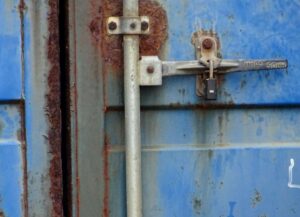
It’s really important to ensure any padlock you purchase is the right size. This includes both the size of the lock body and the shackle. You need the shackle to be large enough to fit in the hasp of what you’re locking, but small enough to be able to maneuver. The lock body size can also affect maneuverability.
Another big decision for a padlock is how you will unlock it. Most locks we’ll discuss below are keyed, but another common option is a combination lock. There are others like Bluetooth and biometric padlocks, but those are less common and not generally recommended for most people.
Conventional Padlock
Conventional padlocks are available in a variety of materials and shackle types but generally have the same basic configuration. The shackle is more exposed here than on other locks and thus is easier to cut or grind off. Locks like the one below made with an extremely-hard boron carbide shackle are more intruder resistant, but we wouldn’t recommend a conventional padlock unless you’re only trying to keep “honest people honest” or you have a padlock guard or lock box (discussed later).
Disc, Discus, Circle, or Round-Shackle Padlock
Disc padlocks are circular, with a small, exposed shackle. The shackle is curved, and unlike a conventional padlock, isn’t spring loaded: the turning of the key physically moves the shackle out of the way. The locks are made from two metal halves that are joined together front to back. On cheaper locks, these pieces can potentially be separated or crushed with a heavy hammer blow, defeating the lock, so be sure to purchase a high-quality model.
‘Diskus’ model locks, like the one below which is handmade in Germany by ABUS, are generally considered the highest quality disc locks.
Closed Shackle
Closed shackle locks are similar to conventional padlocks, but the body of the lock extends up to cover the majority of the shackle, keeping it protected from tampering. However, this also reduces the clearance around the shackle and may make it more difficult to remove in some applications. These locks are not as common as some of the other types of locks we’ll discuss.
The lock below is an example of a closed shackle lock, but we wouldn’t recommend for most situations because it only has soft brass as the lock body material.
Shutter or Straight Shackle Padlock
Shutter locks are so-named because they are often used to secure metal roll-up doors, which are called shutters in some areas. Instead of a curved or hooked shackle like the previous locks, shutter locks have a straight shackle that makes them resistant to tampering because they are effectively a specific type of closed shackle lock.
Locks of this type are probably the most common lock you’ll find used with shipping containers.Ensure that shutter lock you buy is made of hardened materials, as there are some foreign made locks that may look nice but are not all that resistant to tampering. The lock below has a brass core with a steel jacket, which is better than a solid brass body. If you can find a high-quality lock with a steel body, that would be best, but the cost may be prohibitive.
Padlock Guard
A padlock guard isn’t a lock itself, but rather a metal cover that goes over a traditional or other padlock and makes it more secure. Given that padlocks are cheaper than other types of locks, buying a padlock and separate guard may be cheaper overall in some cases. The padlock guard is also removable, unlike most lock boxes (discussed later), so that could be something to consider as well. The main concern is ensuring you have enough room to use the padlock with the guard in place, as it does constrict its movement.
The padlock guard below is a bit pricey but offers good protection. Those of you that are handy with metalwork may think you could make one of these yourselves pretty easily given the simple design, but you’ll either need to use quite thick metal or do some heat treating to harden the metal. Otherwise, it won’t be difficult for an intruder to remove.
End Door Locks
The end door is the only way in or out of an unmodified container, so aftermarket manufactures place a lot of emphasis on locking these doors in various ways.
Lock Rod Handles
The first lock we’ll cover technically isn’t a lock by itself. The four lock rods built into every set of container end doors work by twisting in their mounts and engaging the cams with the keepers at the top and bottom of the container. Handles mounted on each lock rod allow owners to twist the rods in position.
The rods and handles themselves don’t have locks built in, but the containers doors have hasps that allow you to lock each of the four handles to the doors (you can see the four horizontal handles with their hasps about halfway up on the container in the picture above). This is one of the main application of padlocks discussed above.
Bar or Crossbar Lock
A bar lock usually consists of a metal bar that spans across two lock rods (one on each end door) and secures them together. The bar lock has to have some adjustability to fit over the lock rods then tighten down. It also usually has the locking mechanism built-in and thus doesn’t require a separate padlock.
Van Lock
A van lock is often used to secure the two doors of a cargo van together, but it can also be used on a container. It also has three parts: two steel plates that mount to each door and have hasps sticking out, and a puck lock that covers the hasps and locks them together. The two steel plates also have metal guards that stick out and surround the body of the puck lock so it can’t be hit from the side.
The puck lock is a common type of shackle-less lock that has some other applications but is most commonly used in van locks. All the locking mechanism are internal to the puck lock, making it quite resistant to tampering.
The van lock below is a typical design. Note that the two steel plates have to be attached to the container. If you use bolts, make sure they are hardened and difficult to grind or chisel off. Welding them to the container end doors is probably a more intruder-proof way to install the steel plates if you have the means.
Removable Shackle ConLock
Normally, we would have put the removable shackle lock in the section above on the different types of padlocks. A removable shackle lock works how you would expect: the U-shape shackle can come completely out of the lock body, making it easier to get around the object you’re locking. Otherwise, most locks of this type look like conventional padlocks and don’t really offer any specific advantage to containers.
However, there is one removable shackle lock that is unique and applies specifically to the end doors of a shipping container. The ABUS ConLock looks similar to a lock box (discussed later), but it is actually a removable shackle lock that spans across both end doors. Obviously, it’s quite expensive, and thus not relevant for most readers although it is very secure.
Personnel Door
A personnel door is just your average door for humans that is cut into the side of the container, not to be confused with the factory-installed end doors. Personnel doors are typically sheet metal with an internal foam or honeycomb core, and two or three sets of side hinges much like you would see on a regular house. Securing a personnel door can be accomplished in several ways.
Door Type
The first thing to consider on doors from a security standpoint is the door construction itself. We described how most doors you’ll encounter are a sandwich of two metal pieces and a softer core, but there is some variety in the thickness of the metal, the possible addition of pieces of reinforcing metal going in between the front and back layers, etc. It can be helpful to focus on fire-rated or hurricane-resistant doors, as they likely have better construction that will make them more resistant to intruders (but check the specifications to be sure).
For a huge jump in price, you can move up to things like solid metal doors, doors with multi-point engagement locks (top, bottom, and sides of the door), etc. However, these options are going to be overkill for the vast majority of shipping container owners.
Exterior Hinge Security
Hinges are another import area to consider on a door. Given the small floorplans of many container homes, people often want to get an outward swinging door so it doesn’t impede interior space. However, in order to have an outward swinging door, you need exterior hinges with pins that cannot be removed. Otherwise, an intruder can quickly drive out the pins and just pull the door out of the frame on the hinge side regardless of the type of lock on the latching side.
One option for an unremovable door hinge pin is a riveted pin. If you look below, you’ll see that out of the seven vertically stacked section in the center of the hinge, two of them are skinnier. These two sections are areas where the pin is thicker and isn’t attached to either side of the hinge, unlike the other five sections. This design permanently keeps the hinge pin from being removed.
Another way to protect your exterior swinging door hinge pins is with a set screwed pin. Hinges like those below have a tiny set screw that screws in perpendicular to the hinge pin through the hinge barrel. This set screw prevents the pin from being removed while the door is closed, although the set screw can be loosened with the door opened in order to remove the pin if you need to.
Instead of focusing on keeping the hinge pin in place, another option is to use door studs. Even if the hinge pin is removed, a door stud keeps the door from being pulled out of the frame. It does so by having small metal studs attached to the frame-side of the hinge that reach across and go into the door when it is closed. One option is to buy a hinge with door studs built-in, like the one shown below.
Another option for door studs is to use normal exterior hinges and replace one of the screws in each hinge with a security pin like those below that sticks out past the hinge. This will require drilling out the hole in the door-side of the hinge so that the head of the pin can go into the door.
Door Bar Lock
A door bar lock accepts the limitations of reasonably priced personnel doors and adds a more durable, metal barrier in front that can be swung out of the way when not needed. We haven’t seen anyone selling these as a kit, but they are fairly simple to fabricate. By necessity, they have exterior hinges, so ensure the hinge pins aren’t removable as discussed above.
Also, you need to understand that a premium door bar isn’t an excuse to use a cheap exterior door, given that the door bar doesn’t completely cover the door. If someone could easily kick in your door or punch a hole through it, they could still crawl under or over the door bar and get inside. They probably wouldn’t be able to steal your couch with the door bar still in place, but they could certainly get smaller items.
The door bar below is a typical example of what we’re talking about, plus it includes a built-in lock box (which we recommend). You can make a door bar that covers more of the door, but it starts to get heavier and more cumbersome to use.
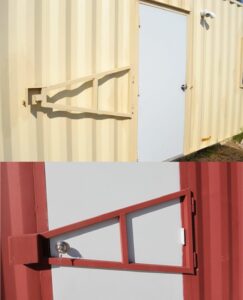
Electronic Locks
There are numerous versions of locking door handles and deadbolts available, but they are all functionally about the same. There isn’t much of a point to go too wild on a door lock until you have a much heavier, more secure door. And as you move that direction, you have to start to wonder if the sheet metal of the container walls become the weak link in your security system. So as mentioned, we don’t recommend any exotic doors with multi-directional locking pins or other features.
However, we can recommend electronic locks for people that share their container home with large family or friend groups, or that use their container home as a rental. These electronic locks eliminate the issue of controlling the distribution of and access to keys by only using combinations. Most models like the one below can support a dozen or more different combination codes for different people, and you can also lock and unlock them remotely with a WiFi connection and home automation system. You can also get a mechanical combination lock, but they usually only allow for one combination and can’t be controlled remotely.
Windows
While extremely security conscious owners may not use any windows at all, or only place windows behind the end-doors, many containers do have windows cut out of the sides. A window is usually the weakest part of the container, as it only takes something as simple as a rock to break the glass then gain entry. Therefore, some type of exterior window security device is definitely worth considering. The choice is whether want something permanent or moveable.
Window Mesh or Bars
For a permanent solution, the most common choices are steel mesh or bars. They work well at keeping people out, but because they are permanent, they can make your container look at a bit like a prison. They also impede your view out of the window a bit. The expanded metal mesh will keep smaller objects from breaking the window but is less secure than bars because the metal is thinner.
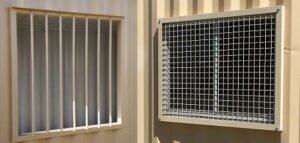
Window Covers
A window cover is somewhat similar to a door bar lock, except it is solid metal due to the fact that windows themselves aren’t as secure as doors. Typically options include horizontal swing, vertical swing, and barn door (horizontal slide). The design and layout of your container home may take some of these options off the table due to the layout. Also note that vertical and swinging options require non-removable hinge pins, as we’ve discussed for other security measures. And, similarly to with door bar locks, we recommend using a lock box on window covers as well.
We’re especially fans of the vertically swinging option, as the window cover in the ‘up’ position gives a nice window shade that reduces direct sunlight into the window. However, this will require a support rod/strut from below or a support cable/chain from above to hold up the cover.
Lock Box
In this case, we’re not talking about a box that businesses use to store cash or the door handle box that real estate agents use to store keys, but instead, a box that covers a lock on a container so that it is harder to cut or remove. It’s typically a steel box with an open side or bottom that is attached to the container and forces someone to access the lock from only one direction so that angle grinder, chisels, bolt-cutters, and other tools are ineffective. In addition, depending on the design, a lockbox may help protect your lock from exposure to rain, snow, and ice, which will prolong its life. A lock box has some similarities with a lock guard, but the largest distinction is that the lock box is permanently attached to the container.
It’s usually best to purchase a lock AFTER you purchase your lock box so you can ensure it has adequate room to open and close. Many of the different locks and things TO lock discussed above can work with a lock box, although the most common application is for a conventional padlock that sits in between the two end doors and locks them together.
The most common type of lock box is custom fabricated and welded onto your container, either by you or the dealer you purchase your container from. The image below shows a typical welded-on lock box for the container end doors, and you can see the hasp on the left that will be covered by the lock box on the right. A padlock will be attached from below to lock the doors together.
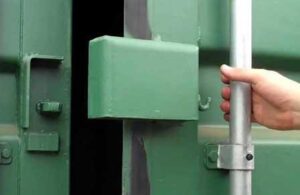
If you don’t have access to a welder, or just want the option to remove your lock box, bolt-on options like the one below are available. However, they will probably require some modifications if you want to use it anywhere other than the end doors.
Detection of actual threats
For the intruders and attackers that do make an attempt to break into your container, detection is the last method of security. The intent is to have a system that can recognize an intrusion is happening and monitor/record it as well as possibly triggering an appropriate response.
Dog
A guard dog actually counts for all three methods of security. Just it’s presence alone will keep some intruders away (and a relevant sign can help). A dog will slow or stop an intruder that does decide to break into your container. And a dog will bark when it sees an intruder, serving as a means of detection as long as you or someone else is near enough to hear the barking and respond. If the dog is big enough, it may enough attack the intruder as well.
Obviously, the choice of breed and general temperament will affect a dog’s ability to perform as a guard dog.
Alarm System
An alarm system can provide both the deterrence and detection methods of security. While the system itself may be hard to see, a well-placed sign (see above) may convince would-be intruders to stay away. And the system, by definition, will detect an attempted break-in and provide some type of notification.
The foundation of an alarm system is its sensors, which can include motion sensors, heat sensors, sound sensors, contact sensors, glass-break sensors, and others. When the sensors detect that something is wrong, systems typically either sound a loud alarm (hence the name), notify a monitoring company, or contact you via phone, text, or other means. You have a choice here: have a loud noise to hopefully scare the intruder away before anything further happens, or remote notification sent silently to attempt to catch the intruder before they are finished (if you or the proper authorities can respond fast enough).
Many alarms systems have battery backup which offers additional protection if the intruder cuts your electrical power supply.
The first system below is very simple but might be all a small container home needs with two window/door sensors and a motion detector. Another choice would be a battery-powered trailer alarm hooked up to a larger battery and external solar panel if you need something completely off-grid.
Moving up to the next tier of system gets you additional sensors and remote controls but more significantly, wireless notification via phone call or text message. Note that these types of systems require a monthly subscription to get service for the wireless notification module.
Beyond what we’ve shared above, there are countless other options at ever increasing prices. With a larger container home, you’ll need additional sensors, although many cheaper systems do offer you the chance to expand later with additional sensors sold separately. You’ll also start to see systems that offer remote monitoring, which requires its own monthly fee but lets the monitoring center dispatch police if required. Before you spend a bunch of money on an alarm system, remember what you’re trying to achieve: either scaring the intruder away with loud noises or notifying someone who can respond and catch them in the act.
Security Cameras
The last protective security measure we’ll cover is security cameras.We can break security cameras into two groups based on their intended outcome: live monitoring and record for later
Live Monitoring Cameras
The first type of security camera exists to record intruders in the act and transmit that imagery or video live. These systems sometimes coincide with an alarm system, although we’ll just talk about stand-alone systems here. Live monitoring cameras include both indoor and outdoor models. Indoor models are really more applicable for keeping an eye on babysitters, pets, repairmen, etc. For home security purposes we’ll focus on outdoor models, since if a thief is in your house, you’ve already lost.
The downside of outdoor models is that you’ll have more area to monitor which may require multiple cameras depending on your situation. And the outdoors has more activity than an unoccupied container, which means it’s more difficult for the detection algorithms to work.
These cameras require a high-speed internet connection and are continuously recording, then sending that video to a remote server. When it detects motion, the camera will send a notification to your computer or phone and allow you to view the video before, during, and after the motion. Then you can decide if you should personally respond, call the police, etc.
As far as the camera itself, there are a few things to consider. Most cameras nowadays are wireless with WiFi, but still require access to an electrical outlet near the camera’s planned location. You also need a camera with good IR recording capabilities for seeing at night (a separate IR floodlight can sometimes help with this). The resolution of the camera is very important, as you really want to be able to identify the intruder’s vehicle or face. A resolution of 1080P is the minimum we recommend, and there are some 4K cameras on the market now, but you’ll need a really high-speed internet connection to take advantage of them. There are more expensive cameras with remote pan/tilt/zoom (PTZ) functionality that may be a substitute for buying multiple cameras depending on your container and yard layout.
When you buy a live monitoring security camera, the physical camera is only a part of the solution. What really differentiates available models is the software and ecosystem which includes the mobile application, detection algorithms, cloud storage, etc. However, a lot of that ecosystem is only provided to you if you pay a monthly fee, so the camera often isn’t just a one time purchase but requires an ongoing commitment. If you skip the fee, depending on the manufacturer you choose, you might lose out on features like online cloud storage, zone targeting (telling the camera to only look for motion in certain parts of the frame like a window), adjustable detection sensitivity, etc. Better cameras have buzzword features like artificial intelligence and machine learning algorithms to help filter out motion that isn’t a cause for concern. If you start to get a notification for every squirrel and every gust of wind, you’ll quickly get tired of using the system.
If you’re going to buy a live monitoring camera, we’d recommend sticking with a larger manufacturer that will have feature and security updates, high-quality monitoring software and cloud storage, etc. The below model is from a major manufacturer of network equipment and is a good one to consider.
Record for later Cameras
This second type of security camera keeps the recording features from before but removes the requirement for an internet connection. In exchange, you’ll give up features like off-site cloud storage, mobile alerts, etc. However, you gain the benefit of not paying the monthly monitoring fee and it’s easier to use 4k cameras.
There are some camera systems you can buy that have multiple cameras and a recording box you’ll place inside the container that does rolling recordings for hours or days onto a hard drive. You’ll have to physically visit the container to access the video (unless you have a high-speed internet connection), so you’ll need to hide/secure it so the intruder doesn’t take or destroy the storage box. These systems are much more expensive and complicated, so we’re not going to focus on them.
Instead, we want to highlight the subset of cameras known as game or trail cameras. These cameras are often used by hunters or wildlife enthusiasts who want to catch a glimpse of animals roaming around after the humans are gone or in bed. However, they are also great for external home security. They are battery-powered and require a separate memory card for storage. They typically don’t start recording until movement is detected to save on batteries.
Most require you to physically access the camera to view any photos or videos they take. There are higher-end models that can send pictures and video via cell phone technology, but you’ll have to pay a monthly fee for the cell phone chip plan.
Due to their camouflaged appearance, trail cameras are great to conceal so that intruders don’t know they are being recorded. Most models, like the one below, include a strap for attaching them to a tree. One good approach is having one of these cameras close to your access road so it can record the license plates of any vehicles entering the property.
Ideally, a security camera system is something you never have to use. But knowing it is there can bring some piece of mind. And you’ll often have the benefit of seeing some funny or interesting activities from your pet or wild animals!
Conclusion
If you made it to the end of this article, congratulations! Security is such a wide-ranging topic that it requires some space to adequately explain and explore. We hope you’ve gained a clear understanding of what security is, if additional security measures are right for your container, and which specific types would be best.
Remember that you can’t deter everyone, and basically every preventative measure can be defeated by someone dedicated enough. Rather than spending a ton of money on locks, we recommend some reasonably-priced options that will keep most intruders away with a parallel focus on some type of detection system that suits your needs.
Let us know below in the comments what experience you’ve had with any of these security methods or container security in general

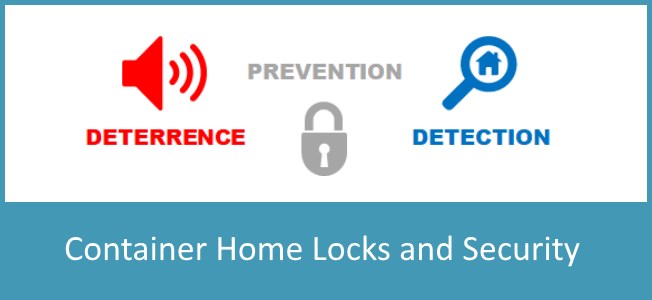

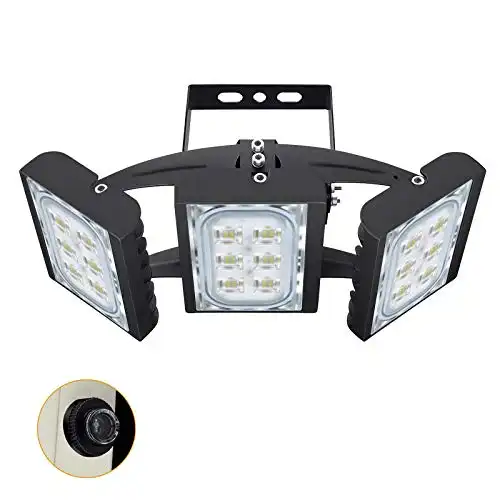
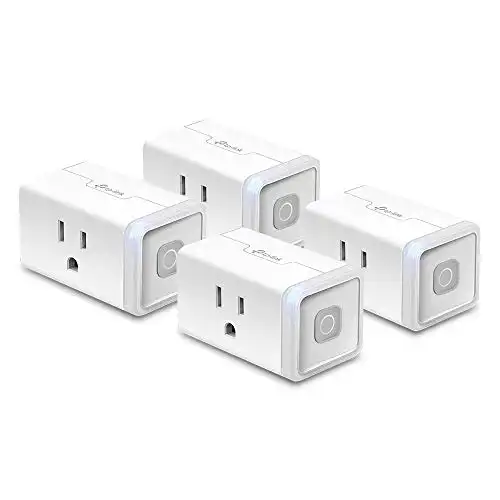
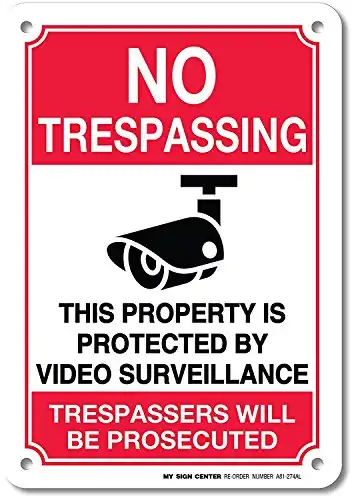
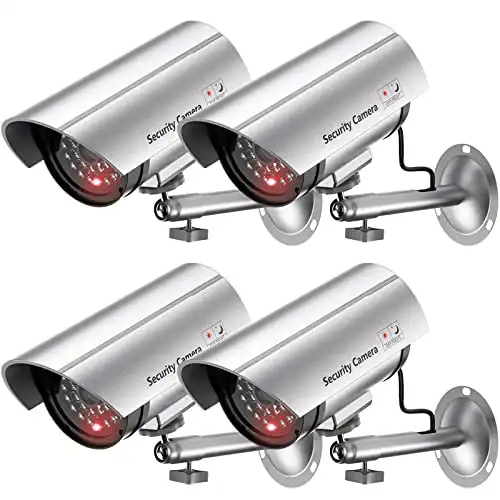
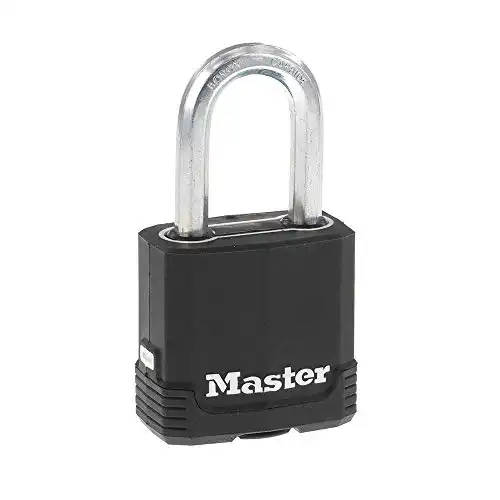
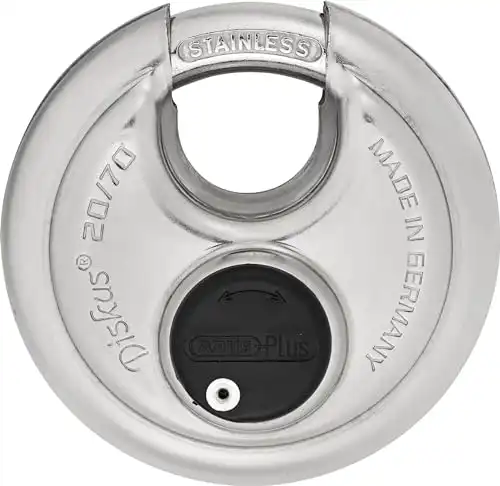
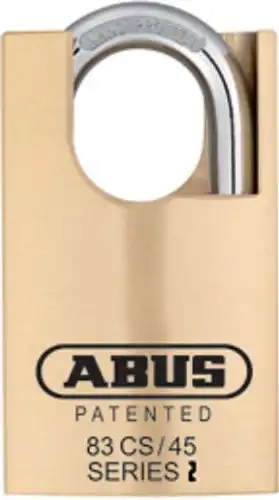
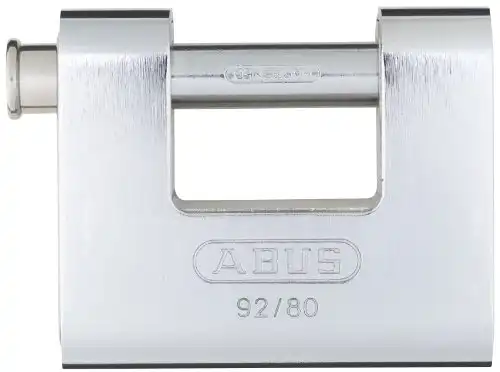
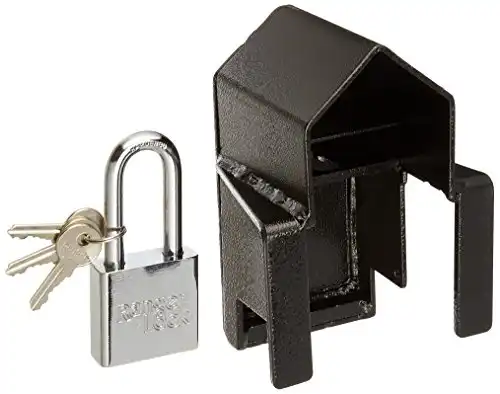
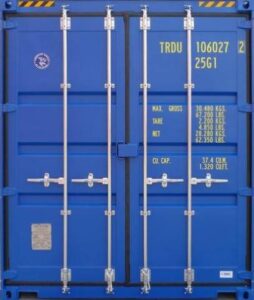
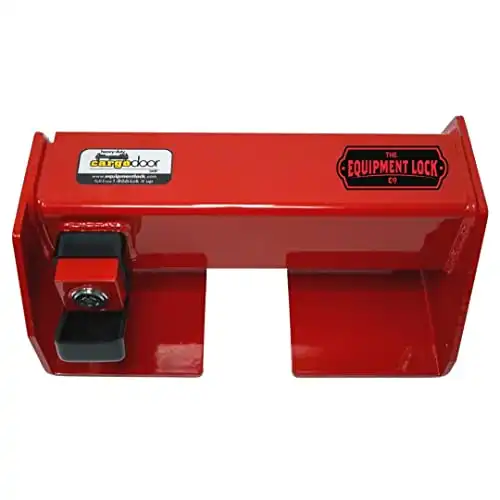
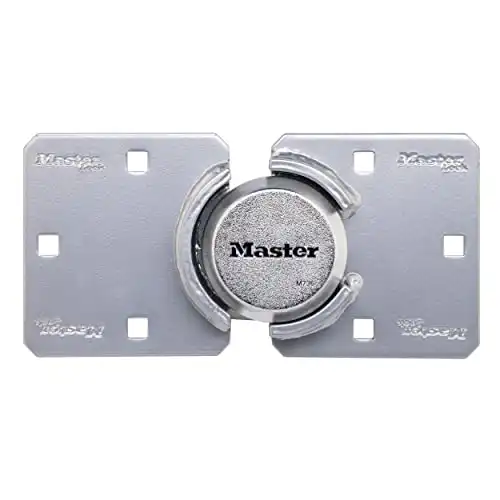
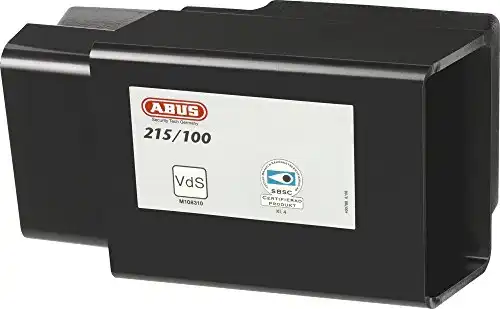
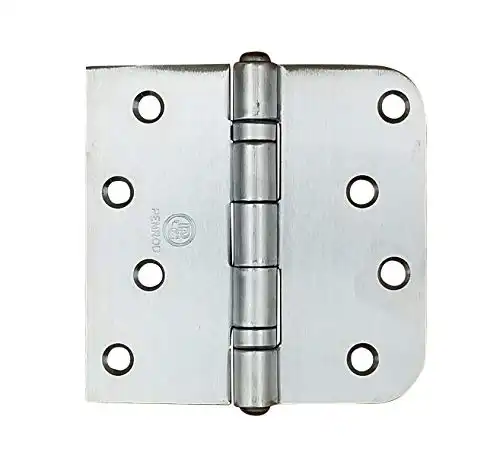
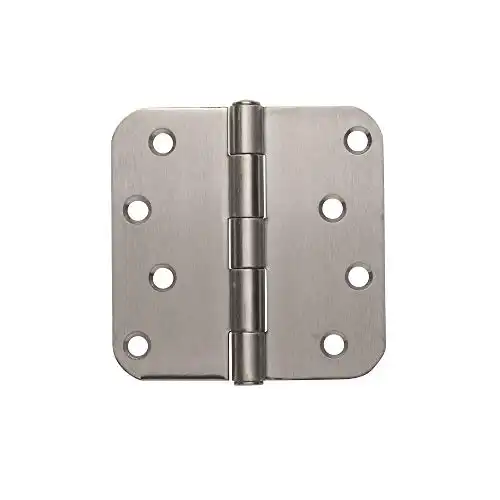
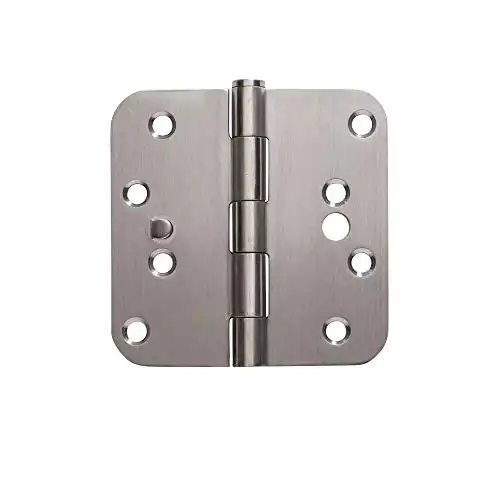
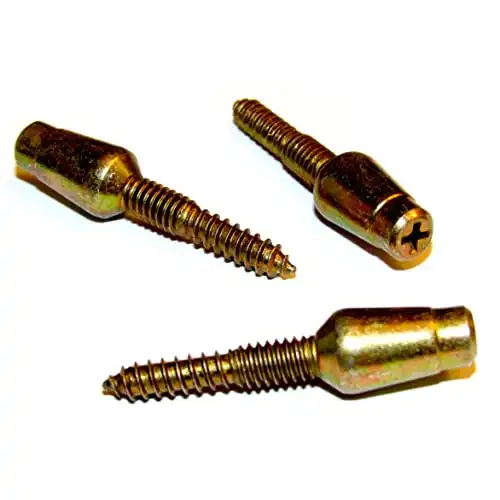
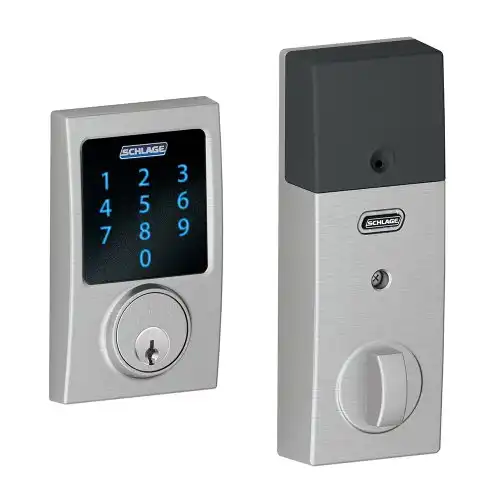
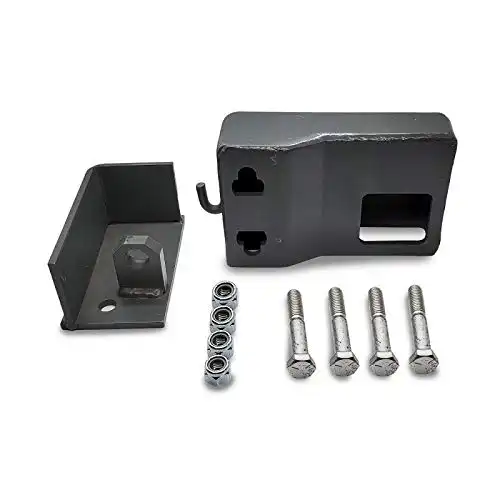
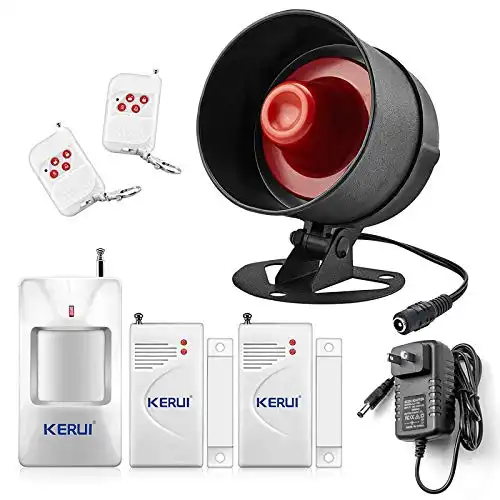
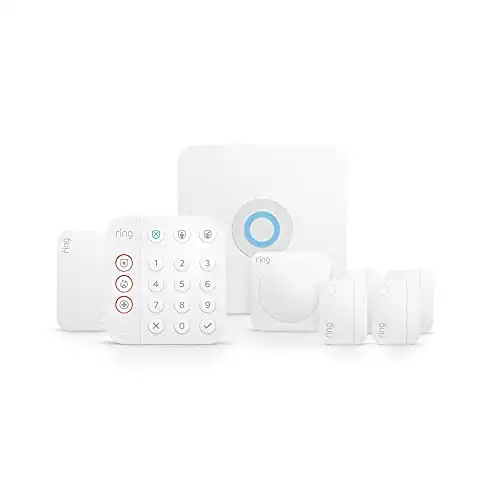
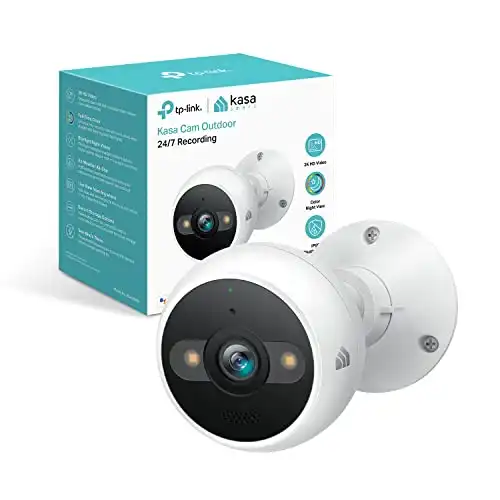
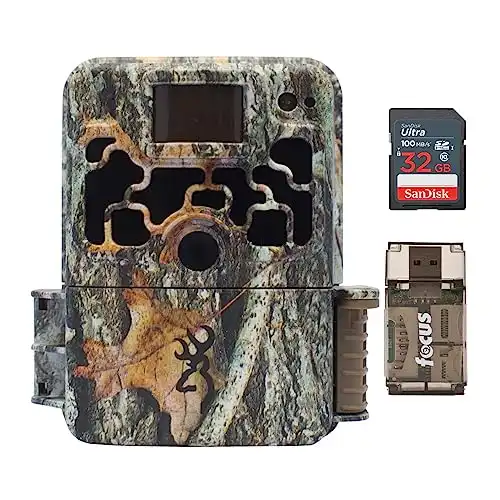

2 Responses
I have 2 man doors in my hi top 40 foot container and want to remove the rear swinging door outside locking assembly on both doors and put handles on the inside to pull the doors shut. What I need is a twist lock with one rod going up to a hole drilled in the roof and one rod going down to a hole drilled on the floor. Kind of like a manual operated overhead door that that has the twist handle only vertical instead of horizontal I wonder if anything is available
This would probably have to be a custom solution. You could remove the cam lock assembly from outside the container, shorten the rod and attach it to the inside of the door, then weld in the upper and lower cam lock receiver pieces inside the container on the floor and ceiling. Or you might be able to use a kit like this (https://www.amazon.com/Buyers-Products-B2159C-Action-Door/dp/B000JFLZXW/) with some slight modifications. Remember, the cam locks not only hold the doors closed, but use the cam mechanism along with the large handle to compress the rubber door gasket. Without the handle and cams, you’d never be able to get the door fully closed…that last few millimeters take a lot of force to compress.